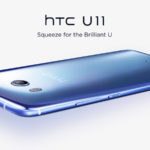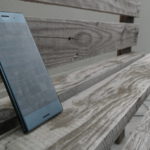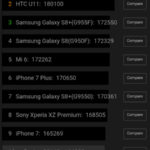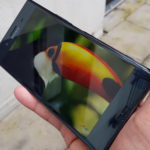Samsung heads into CES 2026 with momentum Samsung Electronics is closing out 2025 with a strong signal of where its future tech ambitions lie….
Sony Xperia XZ Premium review: more than a one-trick pony?
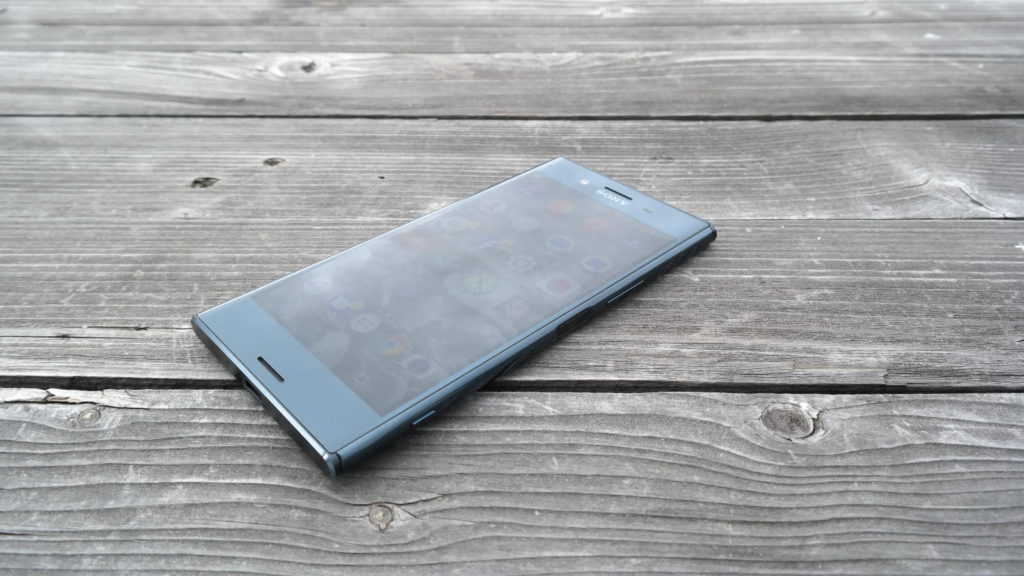
I’ve made no bones about my indifference towards Sony‘s smartphones over the last two years or so. The Z5 range was more of the same from the company (although the Premium and side-mounted fingerprint scanners were interesting), while the Xperia X (review) felt like an overpriced retread.
Then the Xperia XZ Premium was revealed at MWC 2017, and you know what? I was actually excited again. Yeah yeah, the 4K HDR screen is pretty crazy on paper but I didn’t care about that. No, it was the allure of the slowest slow motion recording around — 960fps at 720p, compared to Apple and Samsung’s 240fps/720p video.
So, is it worth getting for slow-mo alone?
The short answer is no. The long answer? Let’s get into it.
The Xperia XZ Premium’s slow motion video recording is one of the coolest innovations you’ll see on a smartphone today, made possible by Sony slapping a small amount of super-fast storage on the camera sensor itself. Unfortunately, technical restrictions (be it the amount of storage or bandwidth needed) mean that users are limited to recording just 0.1 seconds of 960fps slow motion.
This goes further than you’d think though, with 0.1 seconds equal to about four or five seconds of slow-mo goodness, but you’ll still miss key moments or struggle with timing more often than not. Even half a second of super slow-mo would be much better.
Hell, give us the option of recording lengthier slow-mo clips at 480fps — it’s still slower than Apple and Samsung’s best. Instead we currently have the choice of 960fps and bog-standard 120fps.
Nevertheless, Sony has done a decent job of working around these restrictions. For one, you can hit “record” to film a normal clip, then tap an on-screen key to record slow-mo for a tenth of second. And nothing stops you from hitting the slow-mo button multiple times in one clip.
There is one other downside though, and that’s the fact that the slow-mo mode doesn’t seem to let the user adjust focus at all (every now and again, slow-mo fails to focus). Or exposure. But you do have brightness and contrast to work with, so that’s something, I guess.
The feature really gives us an exciting glimpse at what’s possible on a smartphone, pushing the limit when other brands seem content to merely shrink bezels. But it certainly seems like you’ll want to buy a phone featuring the second generation of this tech, hopefully being more fleshed out and capable.
Speaking of bezels…
The Xperia XZ Premium doesn’t follow the trend of shrinking bezels, which might disappoint some. So expect a massive phone that actually features a smaller display than the smaller Galaxy S8 (review).
Borders aside, the new flagship delivers an inoffensive, even pleasant, glass design. In fact, the only other qualm from a visual perspective is that the rear is a fingerprint magnet of note, bringing to mind the OG PS3 in this department.
Do be warned that the phone suffers from Galaxy S6 syndrome though. That is, it’ll slide off flat surfaces. Seriously, the phone dropped from my laptop’s palm rest twice, and threatened to drop off the top of its own box on the first day I got it.
As for the usual I/O rundown, we’ve got a USB Type C port at the bottom, a camera key (sweet), power button/fingerprint scanner and volume rocker on the right, headphone jack at the top and SIM/microSD door (all you need is a fingernail).
Pop the hood
Pay R15 000 for a phone and you’d better be getting powerful internals, right? Mobile enthusiasts won’t be left wanting here (at least for a few months, when the industry inevitably moves on), packing a powerful Snapdragon 835 processor, 4GB of RAM and that aforementioned 4K HDR screen.
In fact, this might just be the first phone in South Africa with the Snapdragon 835 chip — the LG G6 (review) uses last year’s silicon while Samsung uses its own chipset for the Galaxy S8.
Antutu tests yielded results of just over 164 000 points, putting it at number ten on the list — although number eight is also occupied by the XZ Premium. Sony’s flagship is the real deal as far as benchmarks go, then. But that doesn’t tell the whole story, obviously.
General performance is predictably smooth, as apps launch smoothly, homescreen transitions work without a hitch and scrolling feels fast.
A large part of this is due to Sony’s lightweight take on Android. Sure, there’s the company’s icon pack, lateral scrolling in the app drawer and that weird app recommendations screen — but everything still runs at a solid clip. And you can disable that last screen anyway.
As for bloatware/preinstalled apps, you’re looking at Sony’s photo/music/video apps, the PlayStation app, that weird What’s New app, an email client, weather app, news digest, Xperia Lounge, Amazon/Amazon Prime Video and (of course) Sony’s Lifelog app. Truth be told, I could do without at least half these apps. But Sony only allows you to “disable” them, such as the Amazon apps. Boo, hiss.
Gaming performance?
Many phones handle general performance well enough these days, but gaming is a surefire way to see a phone potentially sweat. Fortunately, Sony’s handset takes everything in its stride.
We tried a few lightweight titles, such as Bouncy Hoops, Super Hexagon and Leap On, with all running at an extremely smooth framerate.
Then we moved to the more advanced fare. NASCAR Heat Mobile brought the Redmi Note 4 (review) to its knees, but the Xperia XZ Premium knocked it out of the park, delivering smooth gameplay with few dropped frames.
The Xperia XZ Premium will almost handle anything you throw at it, we found
Meanwhile, first-person bullet-time shooter FZ9 (which runs well enough on the Redmi Note 4) ran smoothly at max detail and with the frame cap set to 60fps. You can’t really ask for anything better, can you (aside from 4K support, probably)?
We also tried out Deus Ex Go and Injustice 2, being two big-name titles that demand decent hardware. The former ran without a hitch, while the latter was playable but definitely saw a few frame skips during gameplay, being a test for many phones.
Nevertheless, you’ll want to put the XZ Premium on your list if raw power is a priority for you. Heck, if you’re one of the few buying a phone primarily for emulation (why?), you’ll want to get this over the local Galaxy S8.
More than a slow-mo camera

Xperia Xz Premium
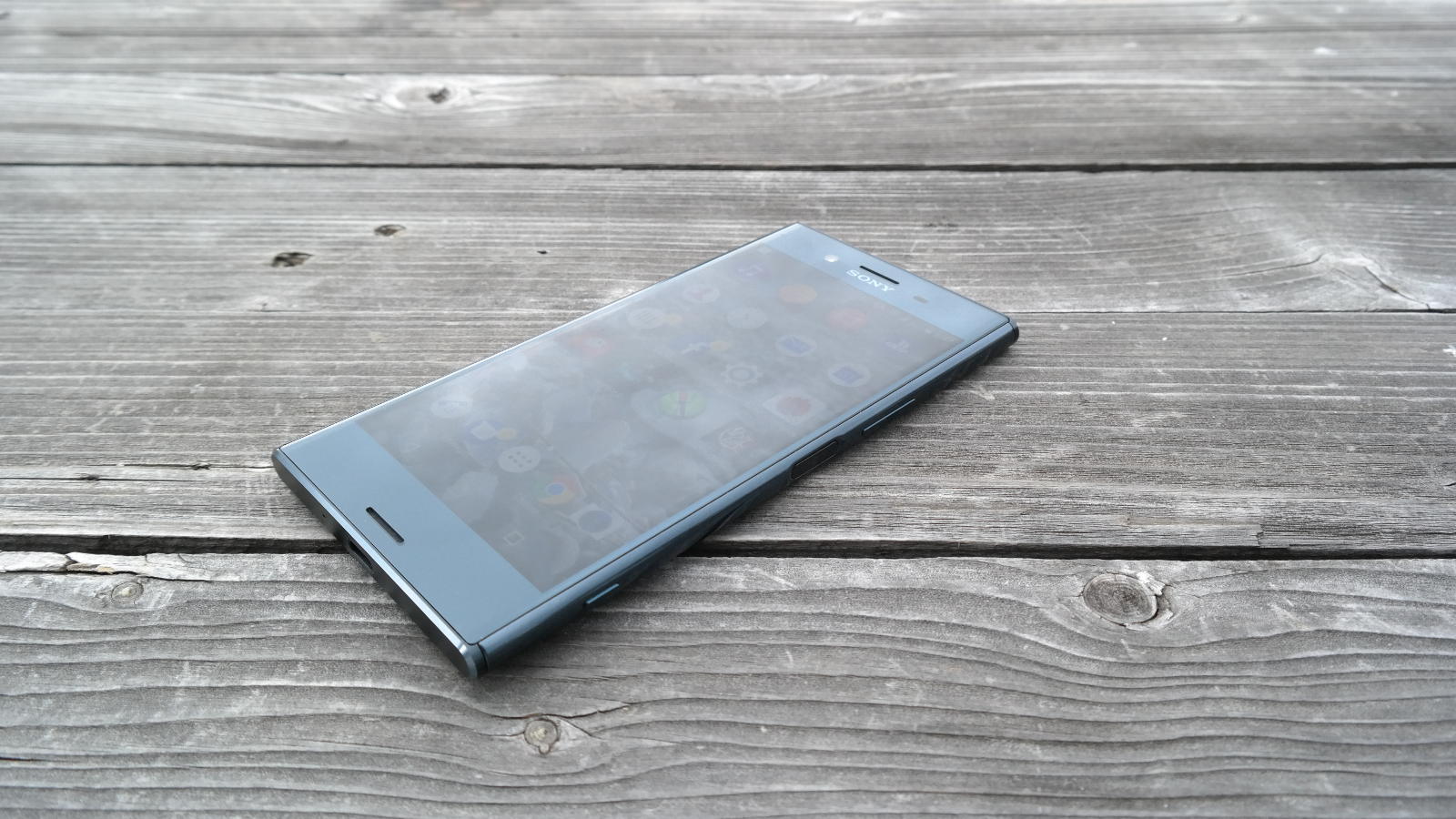
Xperia Xz Premium
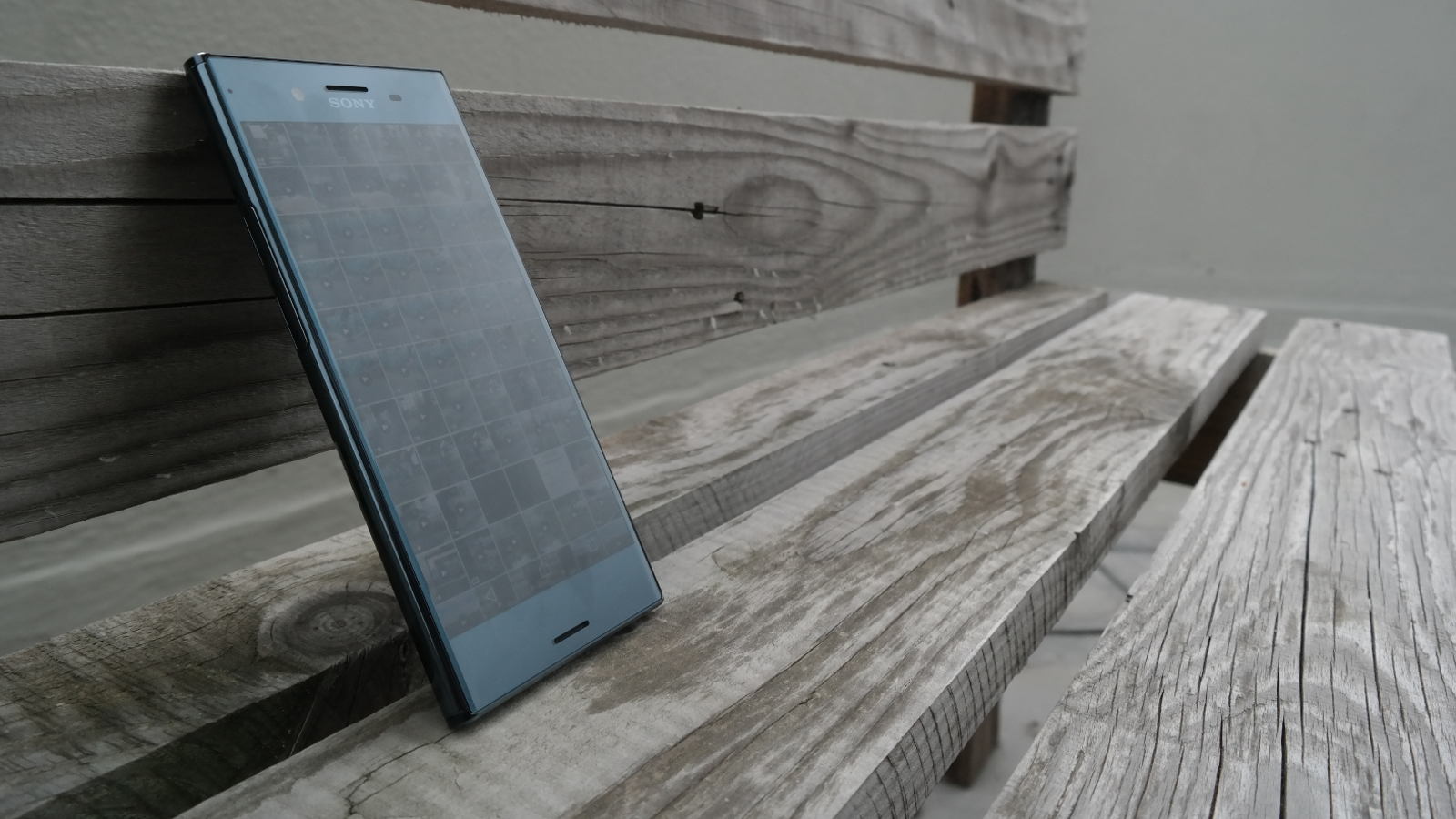
Xperia Xz Premium Antutu
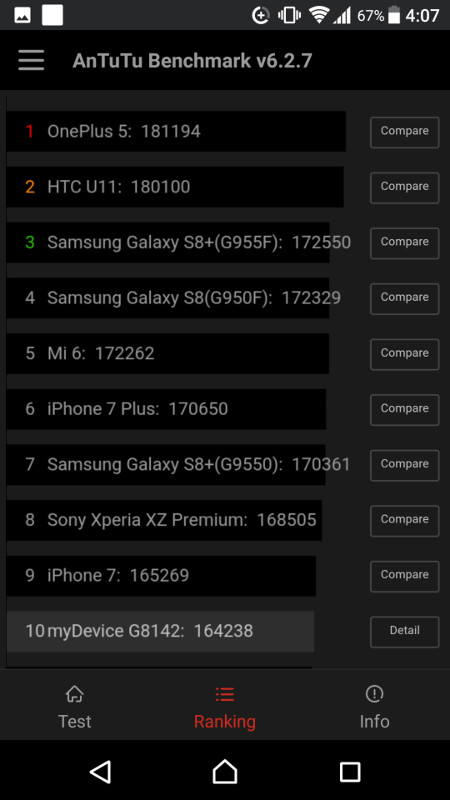
Xperia Xz Premium Screen
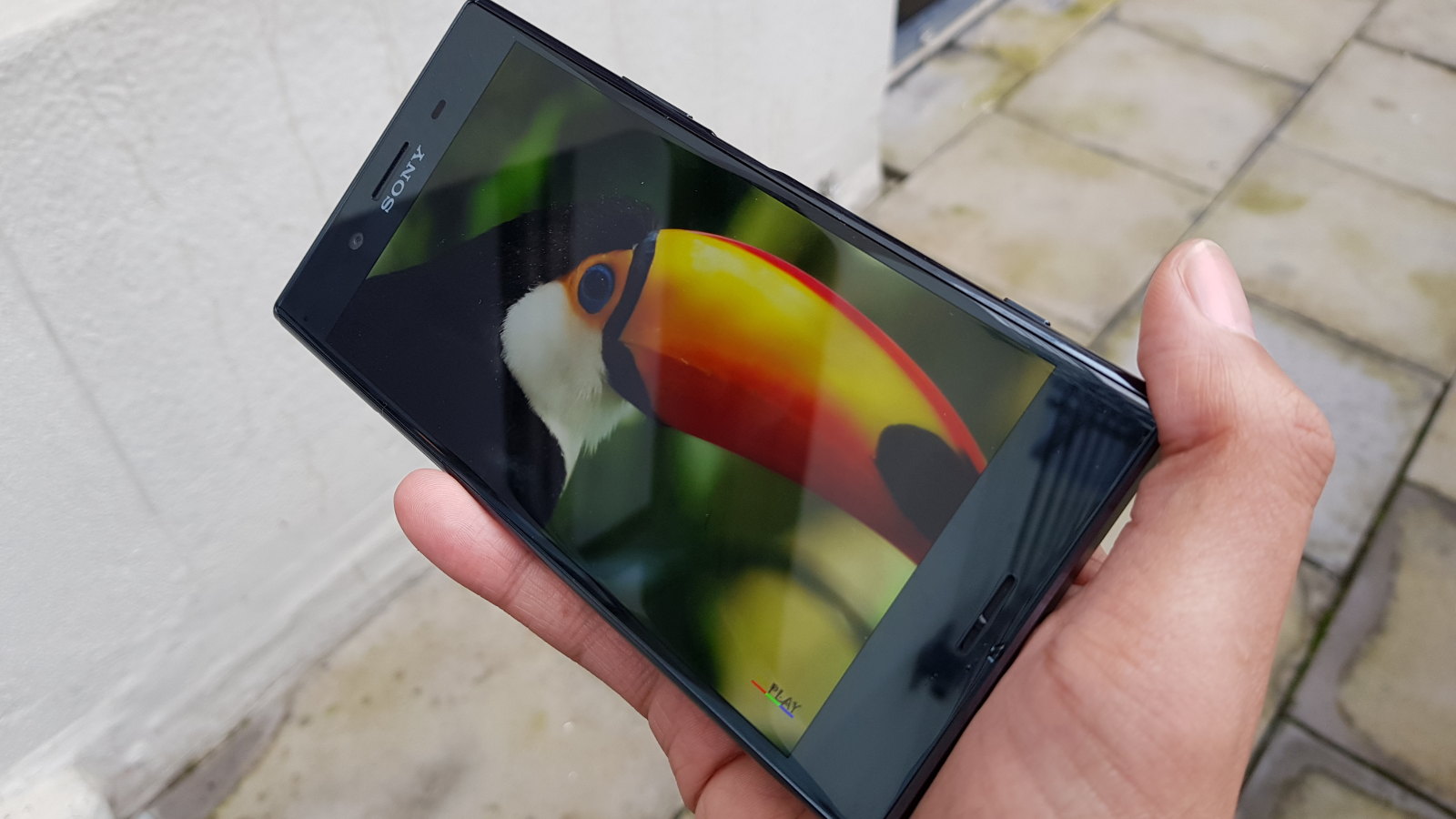
Xperia Xz Premium 1

From the ship in the distance to the bright colours, there's a lot to like about this photo.
Xperia Xz Premium 2

We quite liked this snap, showcasing the detail on the shells, the 19MPs put to good use.
Xperia Xz Premium 3

It took a few tries due to focusing issues, but I eventually got this ballin' night-time shot (heh).
Xperia Xz Premium 4
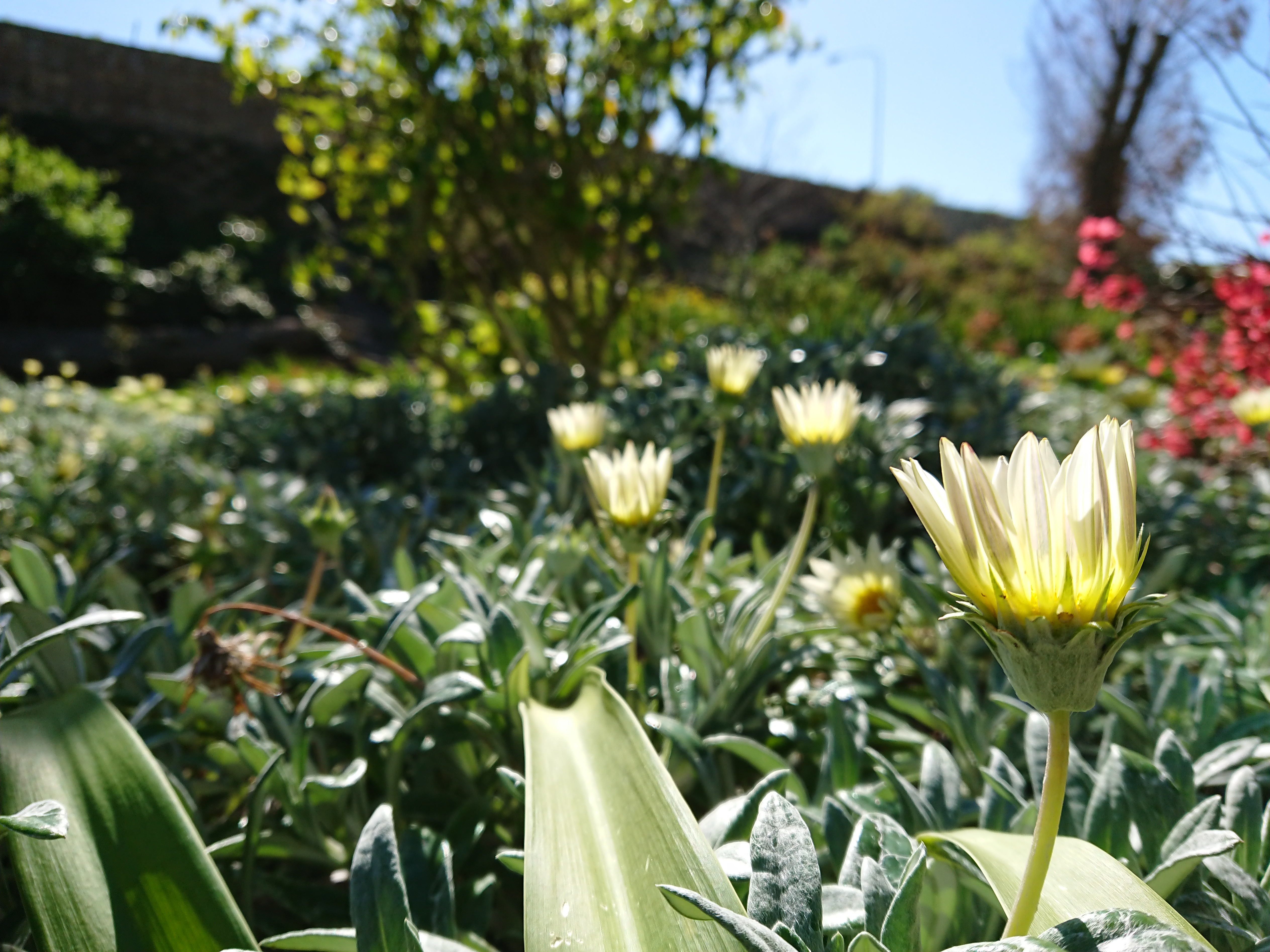
You may have seen this flower before in our head-to-head, but it's still a great example of what the phone can do.
Xperia Xz Premium 5

I struggled to get everything in focus and to keep the blown background at bay, but this was the best I could do.
Xperia Xz Premium 6

Quite possibly my favourite photo taken with the phone. Walking around a racing track, briefly stopping at the puddle and only taking one shot. When it works, it works well.
Sony has often been criticised for its disappointing camera software/processing, despite making the majority of camera sensors used in smartphones today. The Xperia X, for example, often produced images that looked smeared (as we found out in our Xperia X vs Huawei P9 shootout).
The good thing about the Xperia XZ Premium camera is that it definitely seems to be a marked improvement over Sony’s previous phones (tap/click the photos for full resolution). Sure, we see a resolution drop (from 23MP to 19MP), but daytime photos often hold loads of detail and pack some decent dynamic range.
Night-time shots are a real test for any phone, and I found the S8’s output to be sharper most of the time. I tried taking a photo of a beer bottle at night, with Samsung’s phone being less blurry and brighter than Sony’s. And this disparity often reared its head in low light (as we saw in our earlier comparison), although the XZ Premium certainly comes close to equalling Samsung’s device.
I also quite liked the predictive capture functionality, coming in handy when you’re shooting fast-moving subjects. The camera effectively buffers a few frames before you hit the shutter key, allowing you to choose from a few images. Not game-changing, but a welcome addition anyway.
The biggest technical issue I have with the camera though is that focusing still doesn’t feel quite as reliable as the likes of Apple and Samsung’s best, especially at night, although it’s certainly fast most of the time. A longer shutter speed would be lovely too (it tops out at a second), for light painting antics, but otherwise, it’s all a welcome upgrade.
But the other annoyance is with the UI itself. Why is HDR mode tucked away in the settings menu? Why is 4K a separate mode rather than a quality option? Why doesn’t the phone tell you (to the best of my knowledge) that swiping up and down on the viewfinder, rather than on the icons, is the best way to switch through the various modes?
One glaring issue I noticed with Sony’s recent fare (the Z5 Compact, XZ and even the X Compact to a latter extent) has been the fact that these phones all over-heated while recording (not even 4K, mind you). I took the first two phones to sports events, with both phones giving heat warnings after roughly five minutes of 1080p/60fps recording, before the camera app shut down a few minutes later.
I set the XZ Premium on a mobile tripod and hit record at 1080p/60fps. The result? The phone lasted for over 15 minutes, getting warm but not hot, and we didn’t see any heat warnings. Hell, I spent a Sunday at the local skatepark, constantly filming slow-mo clips from 9.30am until roughly 1.20pm, and the phone did a bang-up job (save for a weird snowy screen-style glitch once, which necessitated a restart).
Overkill on the display front?
Another big selling point is the 4K HDR screen, being a first by Sony (combining 4K and HDR). But truth be told, I still prefer the Galaxy S8’s vibrant AMOLED screen.
The display is undoubtedly crisp and detailed, while viewing angles are great (ideal for showing slow-mo clips to friends). But the resolution is really a case of diminishing returns at this size, especially when a quality 1080p display still looks fantastic. I honestly couldn’t say I was looking at a 4K screen.
Compounding matters is the way Sony and Google handle the UI, understandably rendering it at full HD rather than 4K to save battery life. A toggle in settings would be a neat bonus, even if the battery life takes a big hit and few could tell the difference. Instead, the company takes the 4K route only when watching 4K content. Again, understandable.
YouTube videos in 4K are a treat on the device though, and with the XZ Premium joining the LG G6 in supporting Netflix in HDR, you’ve got a few ways to take advantage of the display. Just don’t expect the deep blacks of AMOLED and you’re good to go.
Battery life
Sony’s flagship packs a decent 3230mAh battery. So does the combination of powerful processor and 4K HDR display result in shorter endurance?
The phone performed well at my above-mentioned trip to the skatepark. I charged the phone to just below 100% before leaving home, spending roughly two and a half hours at the park, constantly filming in slow-mo (a clip every 30 seconds to a minute). By the time I got home, the phone had between 40 and 50% juice left and I had over 70 clips to sift through (not counting the ones deleted on the spot as a result of bails). Not bad at all, it must be said.
As for our video playback test? We loaded the usual 20-second 1080p/60fps clip on the phone, lopping the clip via MX Player. With mobile data and WiFi enabled and turning up the screen to manual brightness (as well as the MX Player app), the phone lasted a mere four hours — below average by our calculations. We repeated the test the next day just to be sure (using the same settings) and the result was four hours once again.
So if video playback is a priority, you’ll want to drastically turn down brightness, enable stamina mode and kill connectivity to get anything approaching the endurance of other phones we tested.
In terms of regular usage (some YouTube, social media, music), the phone fared much better though, and it’ll certainly last a working day and into the evening. But two proper days of WhatsApp, Instagram and the like is a no-go here unless you use Sony’s pioneering stamina modes.
Yay or nay?
The Xperia XZ Premium certainly fits the bill for a high-end smartphone in 2017, packing a top-shelf processor, a great camera and a pixel-dense display. It makes for a lovely step up from Sony’s most recent top-of-the-range devices, genuinely duking it out with rival flagships.
Then there’s the super slow-motion, offering a genuinely innovative feature that no-one else brings to the table. But if this is the only reason why you want the XZ Premium, you’re going to be disappointed.
The feature is just too restrictive right now, owing to the 0.1 seconds of capturing time. Unlike other slow-mo solutions, that allow you to go back and adjust the effect, you’re also stuck with what you’ve got. It’s a good foundation and when it works the results can be mind-blowing, but it’s a tantalising glimpse at second-gen technology rather than a revelation right now. Nevertheless, it has me excited about Sony’s flagships again.
Key numbers
Dimensions: 76mm x 8.5mm x 151mm
Weight: 165 grams
SIM type: hybrid SIM (nano)
Display: 5.5-inch, 3840×2160, IPS LCD
Chipset: Qualcomm Snapdragon 835 octacore processor | quad-core Kryo 2.45Ghz, quad-core Kryo 1.9Ghz | Adreno 540 GPU | 4GB RAM
Storage: 64GB expandable storage, via second SIM slot
Imaging: 19MP, f/2.0 aperture, 1.22 micron pixels, LED flash | (Front) 13MP, f/2.0 aperture
Video: 4K at 30fps, 960fps at 720p (0.1 seconds)
Battery: 3230mAh fixed
Cool features: side-mounted fingerprint scanner, PS4 Remote Play
OS: Android 7.1.1
Verdict: The Xperia XZ Premium is worth putting on your wishlist thanks to its sheer power and a fantastic camera experience that approaches (but doesn’t quite surpass) Samsung and Apple’s best. The slow-mo is an amazing innovation when you get it right, but hold off for the successor if this is why you want the phone.
Score: 8.5 out of 10
